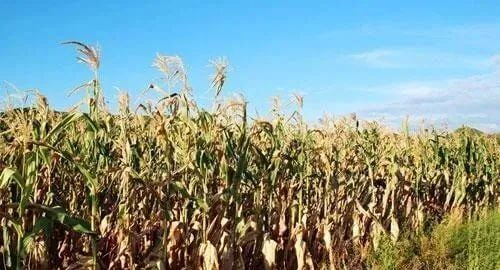PLA has excellent degradation properties and is considered an environmentally friendly material. The popular biodegradable straws, tableware and shopping bags currently on the market all have the participation of PLA. However, the production capacity of PLA has been hindering its large-scale application, and the difficulty in the preparation of its intermediate synthesis raw material, propylene glycol, has indirectly increased the production cost of PLA.
The main raw materials currently used to produce PLA are corn and cassava.
However, there are many people proposed that the use of food corn as raw materials for the production of PLA is too "extravagant", if you can use corn stalks and other agricultural waste to produce PLA. Not only save food, but also realize the use of waste, two birds with one stone.
So what is the difficulty in the process of manufacturing PLA from corn stover and what is the process?
Why can corn stover make polylactic acid?
The traditional process uses starch from crops such as corn and cassava as the raw material for production. The starch is saccharified to obtain glucose, which is then fermented by strains of bacteria to make high-purity lactic acid. The obtained lactic acid is synthesized by direct or indirect polycondensation (i.e., ring-opening polymerization of propylene glycol), and the most used method in industry is indirect polycondensation.

The main components of corn stover were cellulose (32%-36%), hemicellulose (35%-40%) and lignin (17%-20%). Cellulose (cellulose) is a large molecule composed of glucose, polysaccharide cellulose and hemicellulose can be processed to obtain fermentation raw materials - reducing sugars, which can replace the scarcity of traditional food resources, but also solve the pollution problem of straw burning, so that renewable resources are fully utilized.
Three steps to produce lactic acid from straw
The main steps of lactic acid preparation by fermentation of agricultural waste such as straw are: pretreatment of plant fiber raw materials → hydrolysis of plant fiber raw materials → consumption of sugar by bacteria to produce lactic acid → purification of lactic acid crystals.
Pretreatment:
The composition of natural plant cellulosic materials existing in nature is mainly cellulose, hemicellulose and lignin, and their structures are very complex. Thus, the hydrolysis and fermentation of cellulose is generally difficult due to its own structure and the protection of cellulose by lignin and hemicellulose. The purpose of pretreatment is to remove lignin and hemicellulose, reduce the crystallinity of cellulose, and increase the looseness of raw materials.
The main methods of pretreatment are: physical (such as mechanical crushing, pyrolysis), chemical (acid treatment, alkali treatment, ozone method), biological (the use of microbial decomposition of lignin) and integrated (such as carbon dioxide blasting method). Pretreatment of straw can effectively promote sugar production and improve the efficiency of enzymatic hydrolysis to produce sugar; effectively reduce sugar degradation and loss, which is one of the key steps in the manufacture of lactic acid from corn stover.
Lignocellulosic raw material hydrolysis.
The commonly used catalysts for lignocellulosic raw materials are generally inorganic acids and enzymes. Concentrated sulfuric acid hydrolysis at room temperature and pressure results in higher sugar yields. Enzymatic hydrolysis has the advantages of relatively single product and higher sugar concentration, and is the main hydrolysis method commonly used today. Because of the complex structure of wood fiber raw materials, in order to make effective contact between enzymes and cellulose, generally enzyme hydrolysis of wood fiber raw materials are pretreated before.
The enzymatic reaction uses specific processing enzymes to convert cellulose into sugar. Cellulase is most effective at temperatures ranging from 40°°
Concentrated acid hydrolysis is carried out at lower temperature, generally 72% sulfuric acid, 42% hydrochloric acid, 77%~83% phosphoric acid solution can dissolve crystalline cellulose, and cellulose is also homogeneously hydrolyzed in this dissolution process. Concentrated sulfuric acid hydrolysis can convert about 90% of hemicellulose and cellulose into fermentable sugars, and the sugar recovery rate is also very high.
Fermentation preparation of lactic acid:
The fermentation methods used to prepare lactic acid are direct fermentation and simultaneous saccharification fermentation.
Direct fermentation is a direct fermentation of wood fiber raw materials without pretreatment of acid digestion and enzymatic digestion. The lactic acid yield in direct fermentation is low and some by-products are easily generated.
Some researchers' experiments have shown that the yield of direct fermentation is low, and if cellulose waste is pretreated with 0.3 mol/L dilute phosphoric acid, followed by cellulase enzymatic digestion for 60 h, and then the saccharification solution is fermented by M. micrantha, the conversion of lactic acid can reach about 20%
The fermentation method in which the enzymatic digestion of cellulose raw materials and lactic acid fermentation are carried out simultaneously is the synchronous saccharification fermentation method. The enzymatic digestion products provide a carbon source to the fermentation, and the fermentation can consume the five-carbon sugar and six-carbon sugar from cellulose decomposition, which can improve the whole production efficiency.
Although this method has higher requirements for strains, it shortens the production cycle, saves energy, and also improves the utilization rate of strains.

